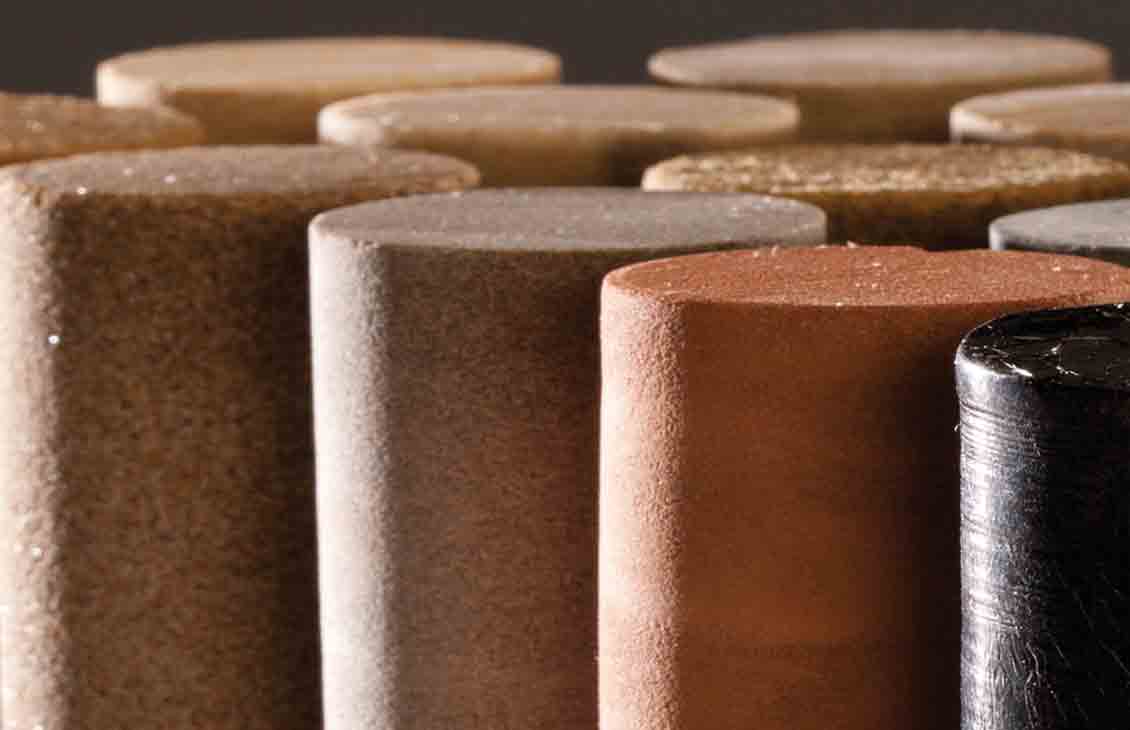BS EN 1936 Determination of Real Density and Porosity of Natural Stone Cores
The British Standard (BS) EN 1936 is a critical method for determining the real density and porosity of natural stone cores. This service is particularly important in sectors such as construction, architecture, and engineering where quality control and material performance are paramount.
This standard ensures that natural stone materials used in core analysis meet the highest standards of integrity and reliability. The process involves a series of tests to determine the true density and porosity of rock cores extracted from quarries or other sources. The real density is essential for understanding the weight per unit volume, while porosity helps assess the void space within the material.
The BS EN 1936 standard specifies detailed procedures for preparing and testing stone samples to ensure accurate results. These tests are conducted using precision instruments like digital balances, micrometers, and other specialized equipment. The accuracy of these measurements is critical for industries that rely on natural stone for structural integrity and aesthetic appeal.
The procedure typically involves the following steps:
- Sampling: Natural stone cores are extracted from quarries or selected sites. These cores should be representative of the material to ensure accurate testing.
- Preparation: The cores are carefully prepared, ensuring that they remain intact and undamaged during processing. This may include trimming with a diamond saw or other suitable tools.
- Weighing: Precise measurements are taken using digital balances. Initial weights before and after drying the samples are recorded to determine moisture content.
- Volume Measurement: The volume of each core is measured using displacement methods, ensuring that all void spaces are accounted for.
- Data Analysis: Using the collected data on weight and volume, real density and porosity can be calculated. This calculation follows the formulae provided in EN 1936.
The results of these tests provide critical insights into the quality and performance of natural stone materials. Real density helps engineers design structures with appropriate load-bearing capabilities, while porosity data is crucial for understanding water absorption properties, which affects durability under various environmental conditions.
| Sample Preparation | Measurement Tools | Data Collection |
|---|---|---|
| Coring and trimming with diamond saws | Digital balances, micrometers | Initial weight before drying, final weight after drying, volume displacement measurements |
| Ensuring sample integrity | Displacement tanks | Data entry for calculation of real density and porosity |
The BS EN 1936 method is widely recognized in the oil & gas sector, where natural stone cores are used in reservoir characterization. Understanding the physical properties of these materials helps in optimizing drilling operations and predicting performance under various conditions. This service supports compliance with international standards and ensures that clients receive accurate, reliable data to inform their decisions.
Benefits
The BS EN 1936 determination of real density and porosity provides numerous benefits for various stakeholders:
- Enhanced Quality Control: Ensures that natural stone materials meet the highest quality standards, which is crucial in sectors like construction.
- Improved Durability: By understanding the properties of the material, structures can be designed to withstand environmental stresses better.
- Informed Decision-Making: Accurate data helps engineers and architects make informed decisions about material selection and design.
- Compliance Assurance: Ensures compliance with international standards, which is essential for global projects.
The detailed insights provided by this service help in optimizing the use of natural stone materials, leading to cost-effective solutions that are both sustainable and reliable.
Competitive Advantage and Market Impact
- Precision: The BS EN 1936 method offers unparalleled precision in determining the real density and porosity of natural stone cores.
- Industry Recognition: Compliance with this standard is widely recognized, giving clients confidence in the quality of materials used.
- Innovation Support: This service supports ongoing research and development efforts by providing accurate baseline data for new applications.
By offering this service, we help our clients stay ahead in a competitive market. The ability to provide accurate, reliable data on material properties is crucial for maintaining a strong reputation in the industry.
Use Cases and Application Examples
The BS EN 1936 method finds application across various sectors, particularly where natural stone cores are used for core analysis. Here are some specific use cases:
- Oil & Gas Industry: In reservoir characterization to understand the properties of rocks under different conditions.
- Construction Sector: To ensure the quality and durability of materials used in construction projects.
- Architectural Projects: For designing sustainable and structurally sound buildings.
| Use Case | Application Example |
|---|---|
| Oil & Gas Industry | Characterizing reservoir rocks to optimize drilling operations. |
| Construction Sector | Evaluating the durability of stone used in building facades. |
| Architectural Projects | Selecting appropriate materials for sustainable designs. |
The data obtained from this method is invaluable for these industries, helping to ensure that projects are completed on time and within budget while maintaining the highest standards of quality and performance.





